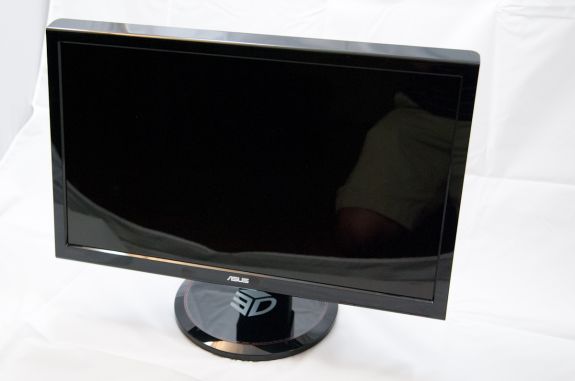ASUS VG236H 23-inch 3D Display Review: 120Hz is the Future
by Brian Klug on August 7, 2010 2:48 AM ESTConclusions
This was the first 120Hz desktop LCD I’ve gotten time with, and even before I opened the box I had heard from all around that it’s held in very high regard. Regardless of how you feel about 3D, the VG236H is an awesome choice even from the perspective of its 120Hz refresh rate. Side by side with a traditional 60Hz LCD, the difference is striking. Further, instead of getting tearing above 60 FPS like you would with vsync off on a traditional 60Hz LCD, you get smoother gameplay that just looks more fluid. I definitely can tell the difference, and now I don’t want to go back.
With the 120Hz display, you’re really getting every frame at or below 120 FPS drawn to the screen. At that high of a response time, you definitively can’t see flicker. The result is a similar kind of ‘once you’ve experienced it, you can’t go back’ to a solid state drive.
But if you’re going to get the VG236, it’s worth it to go for the H model which bundles the 3D vision kit over the HE which excludes it, if nothing else so you can see 3D for yourself and decide if it’s worth it. It’s a shame that NVIDIA doesn’t bundle or subsidize copies of Metro 2033 or other 3D Vision Ready titles that really offer a level of gameplay and 3D polish that even ‘excellent’ and ‘good’ titles clearly lack.
Right now, the VG236H’s primary competition is the Acer GD235Hz, which, bundled with the 3D Vision kit, runs $545 on newegg. At $499 with the bundled 3D Vision kit, the VG236H looks like an undeniably better deal with the same specs on paper. The other primary contender is the Alienware OptX. Hopefully we’ll get our hands on these and compare.
As for the future, the real draw will be to larger screens and higher resolutions. In the immediate future, we’ll see a move to LED backlighting on these 120Hz panels. Once you try a 120Hz display, it’s hard to go back.













121 Comments
View All Comments
ganeshts - Saturday, August 7, 2010 - link
True, but the fact of life is that more monitors support HDMI compared to DisplayPort.Also, most upcoming GPUs claim HDMI 1.4a support, but DisplayPort 1.2 is not seen (that is necessary for 3D).
All 3D TVs use HDMI 1.4. So, if there is one interface to do the job for both TV and monitor, I will gladly take it :)
Pozz - Saturday, August 7, 2010 - link
Most Importantly, why component instead of vga/another hdmi input? mehmbtgood - Tuesday, August 24, 2010 - link
i like mbt alotwww.mbt-usa.com
BladeVenom - Saturday, August 7, 2010 - link
As much as that monitor is going to cost, it's just not worth it when they skimp on the connections.I'm not going to buy another monitor without Displayport.
DarkUltra - Sunday, August 8, 2010 - link
Me too. DisplayPort is needed if we want 120hz in anything higher than 1920x1200. Dual-link dvi maxes out at 1310p @ 120hz I think. 2560x1600x120x24 = 11.8Gbps and displayport can do 17.28Gbps. Fonts look real nice in 135dpi.medi01 - Saturday, August 7, 2010 - link
I rather wish I could buy new 4:3 monitor...softdrinkviking - Sunday, August 8, 2010 - link
http://www.eizo.com/global/products/flexscan/index...you can
mino - Tuesday, August 10, 2010 - link
Check the price ... not everybody who need a screen for work is a DTP/CAD/media professional.softdrinkviking - Saturday, October 23, 2010 - link
true. it's pricey, but they look fantastic and it won't need replacing for a good, long time.when you want an older tech that has become a specialty item, you have to expect it to be more expensive, that's life.
mino - Tuesday, August 10, 2010 - link
Yeah, tell me about it.Needed 1600x1200 (even 1600x1600 would be welcome) had to go for 1920 and got luxky a reasonable 1920x1080 are still made ...
Most is just 16:9 useless junk.